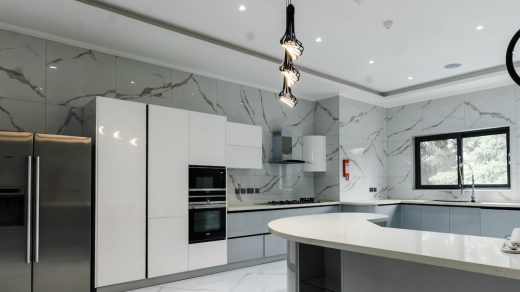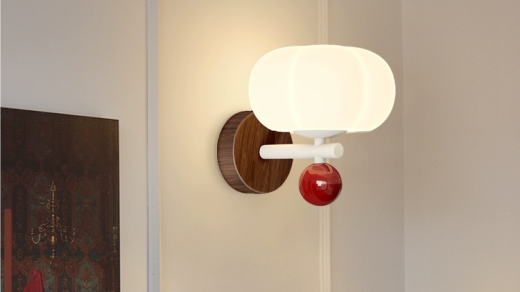Embracing Wabi-Sabi: Ceramic Floor Lamp for Living Room
Wabi-sabi is a Japanese aesthetic philosophy that celebrates the beauty found in imperfection, transience, and the natural cycle of growth and decay. Rooted in Zen Buddhism, this concept encourages individuals to appreciate the fleeting nature of life and the unique characteristics that come with age and wear. The term “wabi” refers to a rustic simplicity, while “sabi” denotes the beauty that comes with the passage of time.
Together, they create a worldview that finds value in the imperfect and the incomplete, urging us to embrace the natural world and its inherent flaws. In practical terms, wabi-sabi can be observed in various aspects of life, from art and architecture to everyday objects. It invites us to look beyond conventional standards of beauty, which often prioritize perfection and uniformity.
Instead, wabi-sabi encourages a deeper connection with our surroundings by fostering an appreciation for the unique stories that objects tell through their imperfections. For instance, a weathered wooden table may bear scratches and dents that reflect years of use, each mark telling a story of family gatherings or quiet moments spent over a cup of tea. This perspective shifts our focus from striving for an unattainable ideal to cherishing the authenticity of what is present.
Embracing Imperfections in Design
In design, embracing imperfections can lead to spaces that feel more inviting and lived-in. The wabi-sabi philosophy encourages designers to incorporate elements that showcase the beauty of flaws, such as asymmetrical shapes, uneven textures, and organic materials. This approach contrasts sharply with modern design trends that often emphasize sleek lines and polished finishes.
By integrating imperfections into design, spaces can evoke a sense of warmth and character that resonates with those who inhabit them. For example, consider a living room adorned with handmade pottery that features slight variations in glaze or form. Each piece becomes a conversation starter, inviting guests to appreciate the craftsmanship behind it.
Similarly, furniture made from reclaimed wood may display knots and irregularities that tell a story of its past life. These elements not only add visual interest but also create an emotional connection between the inhabitants and their environment. By embracing imperfections, designers can cultivate spaces that reflect individuality and authenticity rather than conforming to mass-produced aesthetics.
The Beauty of Handcrafted Ceramic Lamps
Handcrafted ceramic lamps exemplify the wabi-sabi philosophy beautifully. Each lamp is unique, often showcasing subtle variations in color, texture, and form that reflect the artisan’s touch. Unlike mass-produced lighting fixtures, handcrafted ceramics carry an inherent charm that speaks to the skill and creativity of the maker.
The irregularities found in these lamps—such as uneven glazes or asymmetrical shapes—serve as reminders of the human hand behind their creation. Moreover, ceramic lamps can embody a sense of warmth and intimacy in a space. The soft glow emitted through textured surfaces creates an inviting atmosphere, perfect for cozy evenings spent reading or entertaining friends.
When placed strategically within a room, these lamps 88off can highlight architectural features or artwork while simultaneously adding depth and character to the overall design. The interplay of light and shadow created by their unique forms enhances the ambiance, making them not just functional objects but also integral components of a thoughtfully curated space.
Incorporating Wabi-Sabi into Your Living Room
Incorporating wabi-sabi into your living room involves more than just selecting decor; it requires a mindset shift towards valuing authenticity over perfection. Start by evaluating your existing furnishings and decor through the lens of wabi-sabi. Look for pieces that tell a story or evoke memories—perhaps a vintage armchair with frayed upholstery or a coffee table made from reclaimed wood.
These items can serve as focal points that anchor your space in history and character. To further enhance the wabi-sabi aesthetic, consider introducing natural elements into your living room design. Incorporating plants can breathe life into the space while emphasizing the beauty of nature’s imperfections.
A potted bonsai tree or a vase filled with wildflowers can add organic shapes and colors that contrast beautifully with more structured furniture. Additionally, textiles such as linen or cotton in muted tones can soften the overall look while providing tactile comfort. By curating a collection of items that reflect your personal journey and experiences, you can create a living room that feels both authentic and inviting.
Choosing the Right Ceramic Floor Lamp
Selecting the right ceramic floor lamp involves considering both functionality and aesthetic appeal within the context of wabi-sabi design principles. Begin by assessing the scale of your space; a large lamp can serve as a statement piece while smaller lamps may complement existing decor without overwhelming it. Look for lamps that feature organic shapes or textures that resonate with your personal style—perhaps one with an uneven surface or an earthy glaze that reflects natural hues.
Functionality is equally important when choosing a ceramic floor lamp. Consider how you intend to use the lamp: will it provide ambient lighting for relaxation or task lighting for reading? The type of bulb used can also influence the overall atmosphere; warm-toned bulbs tend to create a cozy environment, enhancing the wabi-sabi aesthetic.
Additionally, think about placement—positioning the lamp near seating areas or in corners can create inviting nooks that encourage relaxation and connection.
Creating a Cozy Atmosphere with Wabi-Sabi Decor
Soft Textiles for Tactile Comfort
Start by incorporating soft throws, cushions, and rugs made from natural fibers like wool or cotton. These elements not only add tactile comfort but also contribute to an overall sense of warmth within the space.
Natural Colors for Tranquility
Opt for muted colors inspired by nature—earthy browns, soft greens, and gentle blues—that promote tranquility and relaxation. In addition to textiles, consider incorporating various decorative objects that embody wabi-sabi principles.
Layered Aesthetic and Ambient Lighting
Displaying these items on open shelves or coffee tables allows for easy access while showcasing their unique characteristics. Lighting plays a crucial role in creating ambiance; using dimmable bulbs or strategically placed lamps can help establish a warm glow that enhances the cozy atmosphere you aim to achieve.
Embracing Simplicity and Minimalism
Embracing simplicity and minimalism is at the heart of wabi-sabi design philosophy. This approach encourages individuals to declutter their spaces and focus on what truly matters—objects that hold significance or evoke positive emotions. By reducing visual noise, you create an environment that fosters mindfulness and appreciation for each item present in your home.
To achieve this minimalist aesthetic, start by evaluating your belongings through a critical lens. Identify items that no longer serve a purpose or bring joy; consider donating or repurposing them rather than allowing them to occupy valuable space. Once you have streamlined your possessions, focus on curating a selection of meaningful pieces that reflect your personality and values.
This could include artwork from local artisans, handcrafted furniture, or cherished heirlooms passed down through generations. By surrounding yourself with fewer but more meaningful items, you cultivate an atmosphere of tranquility and intentionality.
Finding Balance and Harmony in Wabi-Sabi Design
Finding balance and harmony in wabi-sabi design involves creating spaces that feel cohesive yet dynamic through thoughtful arrangement and selection of elements. This balance is achieved by juxtaposing different textures, colors, and forms while maintaining an overall sense of unity within the space. For instance, pairing smooth ceramic lamps with rough-hewn wooden furniture creates visual interest while highlighting the beauty of both materials.
Additionally, consider incorporating elements from nature to enhance harmony within your design scheme. Natural materials such as stone, wood, and clay not only resonate with wabi-sabi principles but also promote a sense of connection to the environment. Integrating plants into your decor can further enhance this connection; their organic forms introduce life into your space while reminding you of nature’s ever-changing beauty.
By thoughtfully curating your environment with attention to balance and harmony, you create a sanctuary that reflects both your personal style and the timeless principles of wabi-sabi design.



